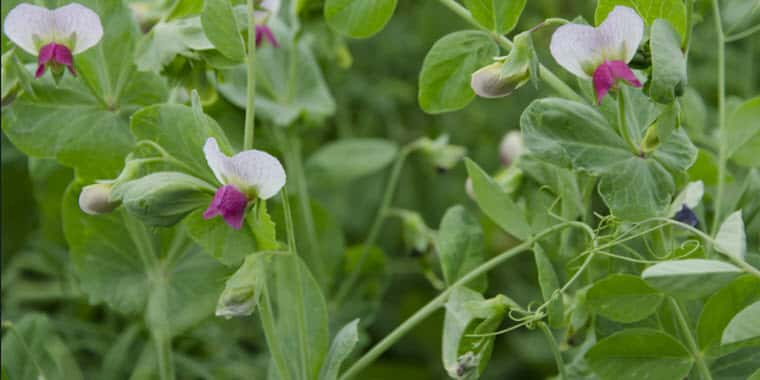Current events have made decisions around crop options very difficult this spring. Field peas are an option that may have a fit for some producers. A cool-season legume, peas, grow well across South Dakota and are especially well adapted to drier regions of the state. Peas can be harvested as a grain or provide producers with some good quality early forage.
As with many of the grain commodities, peas have not drawn the return to investment that many producers would like in recent years. However, they are an excellent protein source and as such have not bottomed out as some other commodities. As we move into an unknown future, they may hold some opportunities because of their protein content.
A cool-season crop, peas need to be planted early as they prefer cooler conditions during flowering. They have the same growing season as spring wheat and therefore early spring is the best time to plant peas. To help facilitate this, it might help to know that South Dakota has a number of local seed producers. The South Dakota Pulse Producers, Inc. also has a website that includes links to production information and to local marketing options. In recent years two videos were produced by SDSU Extension staff that discussed planting and harvest of field peas.
SDSU Extension performs variety trials for peas each year, and those can be viewed at the Field Pea Variety Trial Results page. In addition herbicide options can be found here.
Research performed across Western South Dakota between 2008-10 showed that peas grown for forage in a mix with oats and other spring grains such as barley and triticale compared very well with other early season forage options. The pea/oat mix as well as the pea-barley and pea-triticale mixes, produced a good combination of protein and tonnage. In this research the oats or small grain was planted at 65% of normal seeding rate and the peas were planted at 45% of normal seeding rate. The growth stage of the small grain dictated the timing of harvest. In situations where soil moisture remains plentiful, an early pea/small grain forage crop could leave time for a second forage crop later in the season. This might appeal to some livestock producers.
###
Written collaboratively by Ruth Beck, Dwayne Beck and Chris Graham – SDSU Extension Agronomy Specialists
iGrow SDSU Extension
Northern Ag Network


